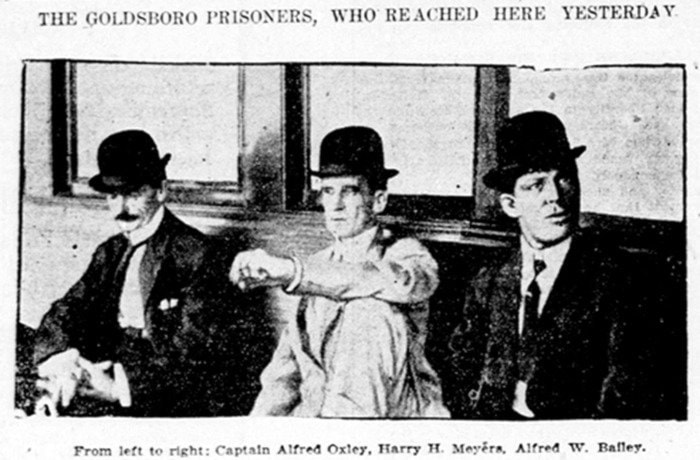Not well known is the story of the appearance in Whonnock of Francis G. Bailey, the perpetrator of what the British Colonist in 1909 describes as “the most colossal theft in the history of the Atlantic coast.”
Bailey was the president of a New York export shipping company, of which his brother Albert was the secretary.
After a few successful years, the Baileys suffered investment losses of thousands of dollars, and the pair started using bank drafts received in payment for goods for their own private purposes.
When finally the creditors knocked on the door, the Baileys chartered an old coaster, the Goldsboro, and filled it with cargo acquired on false pretenses, valued at $40,000.
On Saturday, May 2, 1908, the vessel left New York with the brothers on board, without the required clearance papers from the port authority.
It took less than a week for the creditors and the many firms who had merchandise on the ship to realize what had happened, and the authorities were alerted.
The Goldsboro sailed to Honduras, which had no extradition treaty with the U.S. and where the brothers allegedly bought a banana plantation, thinking they would be safe. However, at the request of the state department, the Honduran minister of foreign affairs ordered the immediate detention of the Goldsboro, much to the “ ... satisfaction and high appreciation of the United States Government.”
Francis and Albert Bailey, as well as the captain Alfred Oxley, and Henry Meyers, who had acquired most of the freight in New York, were arrested and put on board the Norwegian vessel Utstein in the custody of Lieut. P. W. Beery.
But when the vessel sailed for Miami, it was minus the main suspect.
Francis Bailey had escaped after Beery returned to the ship late at night from a “banquet” on shore.
The three remaining men were taken back to New York, were Albert Bailey was sentenced to “not less than four years and six months and not more than six years and eight months in Sing Sing.”
The newspapers said nothing about the fate of Oxley and Meyers.
Lieut. P. W. Beery, who let Francis Bailey slip away, was fired.
As for the Goldsboro, after a mutiny by the crew was settled with the promise of payment of their wages, the leaking old tub returned to New York.
But what happened to Francis Bailey? He made his way from Honduras up to the Vancouver area and, under the name of Col. Edward Shannon Kirkconnell, stayed on a property just west of the Whonnock train station put up for sale by Arthur Norman Hackney.
This must have seemed an obscure enough corner and far enough removed from New York, where the authorities were obviously looking for him.
Bailey, alias Kirkconnell, lived quietly in Whonnock, looking, as later reported in the newspaper, “the part of a farmer-ranchman, born and bred.”
He grew a beard and let his hair grow long, so there was hardly any likeness with the photograph that in June of 1909 a New York detective, accompanied by two Vancouver police constables, showed him.
But when the New Yorker asked him, “Well, isn’t this your picture, taken when you were in business in New York, when you were living in Flatbush, and before the days of the pirate ship?,” the “Colonel” did not deny this.
The search for Francis G. Bailey was over.
After his arrest in Whonnock he was returned to New York, where he was tried and sentenced to imprisonment at Sing Sing for the same length of time as his brother. It is not known what happened to either of the two after that.
How had the New York police figured out where Bailey was hiding?
According to the New York Times, somehow the police became suspicious of the correspondence between a Colonel Edward Shannon Kirkconnell and a Miss Katherine Maude Slocum, a New York schoolteacher.
The letters were traced back to Whonnock, “ ... which the police were able to find on the latest maps of British Columbia.”
The New York detective reported, “The mosquitoes up there are as big as chicken hawks and twice as fierce.”
Fred Braches is a local historian who lives in Whonnock.
